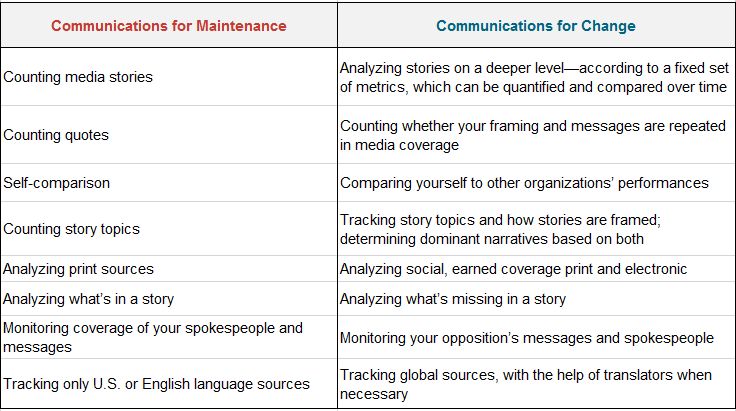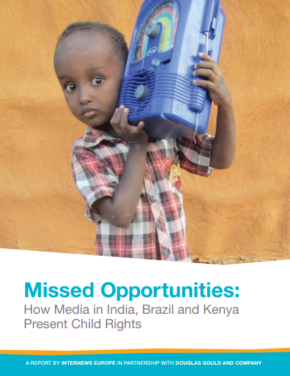Too often, communications pros get into the habit of simply “counting press clips” to evaluate progress. But a closer analysis of media coverage can offer much more than that. It can be used by change agents to ground, measure and even advance broader social good campaigns.
For those of us in the business of social change, there is a right way and a wrong way to evaluate media coverage. The right way positions communicators as agents of change, by allowing them to better understand and then direct an organization’s news profile. The wrong way is, essentially, reactive. It monitors media coverage but largely maintains the status quote.
Below are a few rules of thumb for these two different approaches to media relations.

For DG+CO, our media analyses are in-depth and custom made to address the goals an organization wants to achieve. We look to see that the organization’s messages are included, its spokespeople effective, and that the volume and distribution of coverage across all platforms is sufficient to move the needle on an issue.
Framing stories correctly, with the right messengers and messages determines whether people will respond in the intended way. For example, we found through polling that Americans tended to gauge public education in terms of “market accountability” leading to more high-stakes testing. This was the dominant theme the media was using, too. In order to make the work of our client address this media narrative, we had to reframe our story to be one that was about the proper role of public education in terms of broad social benefit.
The strategic advice that can result from an in-depth external media analysis can dramatically improve the overall outcome of any campaign that relies on earned or social media.
